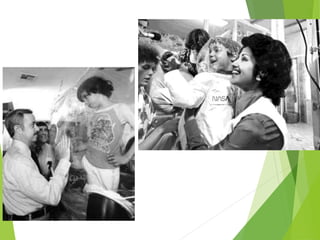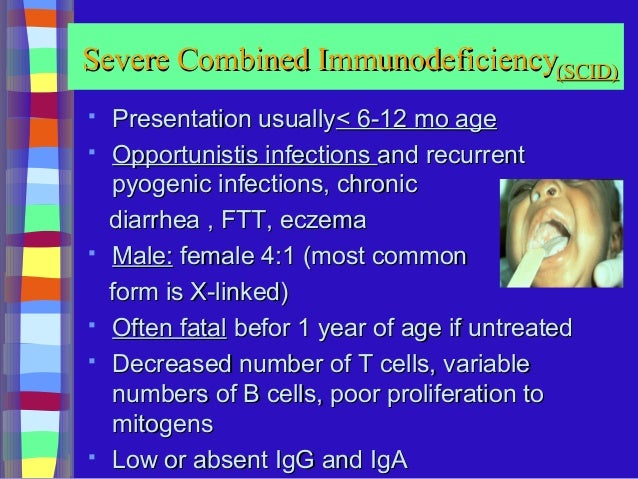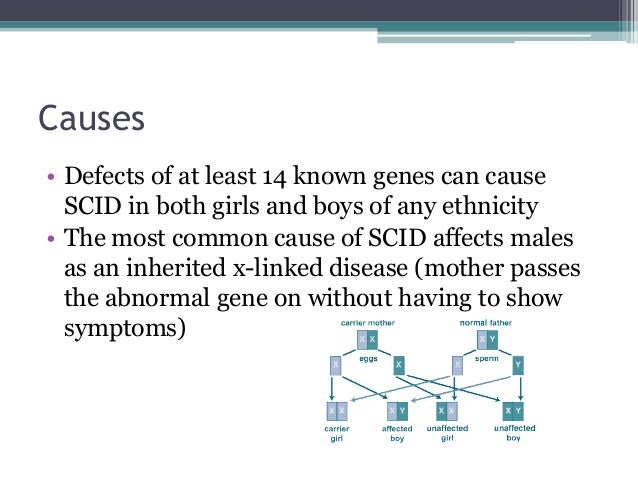
In the ensuing 6.5 years, 3 252 156 infants in the state had DNA from dried blood spots assayed for T-cell receptor excision circles (TRECs). 7, 2014 Export RIS Citation Information.OBJECTIVES: Newborn screening for severe combined immunodeficiency (SCID) was instituted in California in 2010. "Newborn Screening for Severe Combined Immunodeficiency in 11 Screening Programs in the United States" vol. "Newborn Screening for Severe Combined Immunodeficiency in 11 Screening Programs in the United States" 312, no. Newborn Screening for Severe Combined Immunodeficiency in 11 Screening Programs in the United States. Verbsky, James Vogel, Beth Walker, Rosalyn Walkovich, Kelly Walter, Jolan E. Secord, Elizabeth Seroogy, Christine Shearer, William T. Pai, Sung-Yun Porteus, Matthew Rodriguez, Ray Romberg, Neil Routes, John Ruehle, Mary Rubenstein, Arye Saavedra-Matiz, Carlos A.

Lee, Rachel Lehman, Heather Lin, Zhili Lorey, Fred Abdel-Mageed, Aly Manning, Adrienne McGhee, Sean Moore, Theodore B. Hu, Diana Infante, Anthony Johnson, Daisy Kapoor, Neena Kay, Denise M. Duffner, Ulrich Fong, Chin-To Forbes, Lisa Freedenberg, Debra Gelfand, Erwin W. Cunningham-Rundles, Charlotte Dasu, Trivikram Dave, Nina De La Morena, Maria T. Brokopp, Charles Brooks, Edward Caggana, Michele Celestin, Jocelyn Church, Joseph A. Baker, Mei Ballow, Mark Bartoshesky, Louis E.

Currier, Robert Brower, Amy Andruszewski, Karen Abbott, Jordan K. Personal Author(s) : Kwan, Antonia Abraham, Roshini S. We also found that low naïve T cell percentage is associated with a higher risk of SCID/CID, demonstrating the utility of memory/naïve T cell phenotyping as part of follow-up flow cytometry.ĬITE Title : Newborn Screening for Severe Combined Immunodeficiency in 11 Screening Programs in the United States Despite lower median TREC values in premature infants, the majority for all ages are well above the TREC cutoff and the algorithm, which selects urgent (undetectable TREC) and repeatedly abnormal TREC, minimizes referral. Our data support a single NBS testing-and-referral algorithm for all gestational ages. Compared to outcomes from the 10 years prior to SCID NBS, survival was higher (9/9 vs 4/7), likely due to a lower rate of infection before treatment. One patient with athymia underwent successful thymus transplant. All patients with SCID/leaky SCID underwent hematopoietic cell transplant or gene therapy with 100% survival.

SCID/leaky SCID incidence was ~1 in 80,000, while ~1 in 51,000 had severe T cell lymphopenia for which definitive treatment was indicated. Another 7 were diagnosed with other combined immunodeficiencies, and 3 with athymia. 9/237 were diagnosed with SCID/leaky SCID (4% of referrals vs 0.001% general population). NBS of 720,038 infants prompted immunologic evaluation of 237 (0.03%). TREC values, diagnostic, and outcome data from all patients screened for SCID were evaluated.

We describe developments and outcomes from the first 10 years of this program (Feb 1 2009-Jan 31 2019). Massachusetts began newborn screening (NBS) for severe combined immunodeficiency (SCID) using measurement of T cell receptor excision circles (TRECs) from dried blood spots. "Ten Years of Newborn Screening for Severe Combined Immunodeficiency (SCID) in Massachusetts" vol. "Ten Years of Newborn Screening for Severe Combined Immunodeficiency (SCID) in Massachusetts" 9, no. Ten Years of Newborn Screening for Severe Combined Immunodeficiency (SCID) in Massachusetts. CITE Title : Ten Years of Newborn Screening for Severe Combined Immunodeficiency (SCID) in Massachusetts


 0 kommentar(er)
0 kommentar(er)
